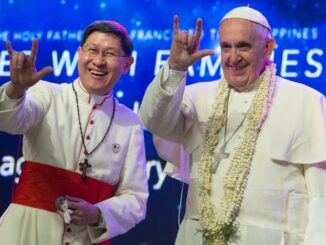
R.I.P: Vatican release the medical certificate detailing Pope Francis cause of death on Easter Sunday…
On April 21, 2025, the Vatican officially announced the death of Pope Francis, the 266th pontiff of the Roman Catholic Church, at the age of 88. The announcement was accompanied by the release of his medical certificate, providing detailed information about the cause of his death.
Medical Certificate Details
According to the Vatican’s statement, Pope Francis passed away at 7:35 AM on April 21 in his residence at the Santa Marta guesthouse in Vatican City. The medical certificate, signed by Professor Andrea Arcangeli, the director of health for Vatican City State, attributes the pope’s death to a “cerebral stroke, coma, irreversible cardiocirculatory collapse.” The document also notes that the pontiff had been affected by a previous episode of acute respiratory failure due to double pneumonia, which had required hospitalization earlier in the year. Additionally, the certificate reveals that Pope Francis had a history of arterial hypertension, multiple bronchiectasis, and Type 2 diabetes, conditions that were not previously publicly known.
Recent Health History
Pope Francis had faced several health challenges in recent years. In February 2025, he was hospitalized for severe bronchitis and pneumonia in both lungs, which required him to remain in the hospital for nearly a month. Despite these health issues, he continued to fulfill his duties as pope, participating in meetings and spiritual activities from his hospital bed. In March 2025, the Vatican reported that he was no longer in immediate danger and was responding well to treatment.
Final Public Appearance
Remarkably, Pope Francis made a public appearance on Easter Sunday, April 20, 2025, just a day before his death. He presided over the Easter Vigil Mass and delivered the Urbi et Orbi blessing from the central balcony of St. Peter’s Basilica. His participation in these events was seen as a testament to his commitment to his papal duties and his resilience in the face of health challenge.
Legacy and Tributes
Pope Francis was known for his humility, progressive views, and efforts to reform the Catholic Church. He was the first Latin American pope and the first Jesuit to hold the position. Throughout his papacy, he advocated for the poor, promoted interfaith dialogue, and took progressive stances on various social issues. His death has prompted an outpouring of tributes from world leaders, religious figures, and citizens worldwide, reflecting the profound impact he had during his tenure.
Funeral and Succession
Following his death, Pope Francis’ final wish was to be buried at the Basilica of Saint Mary Major in Rome, rather than St. Peter’s Basilica, a church he frequented during his papacy. The Vatican has announced that his funeral will take place within six days, followed by a mourning period known as the Novendiali. A papal conclave to elect his successor is expected to convene within 15 to 20 days .
Conclusion
The release of Pope Francis’ medical certificate provides clarity on the circumstances surrounding his death. His passing marks the end of a transformative papacy that emphasized compassion, humility, and service to the marginalized. As the Catholic Church and the world mourn his loss, preparations are underway for his funeral and the subsequent election of a new pope.

Be the first to comment